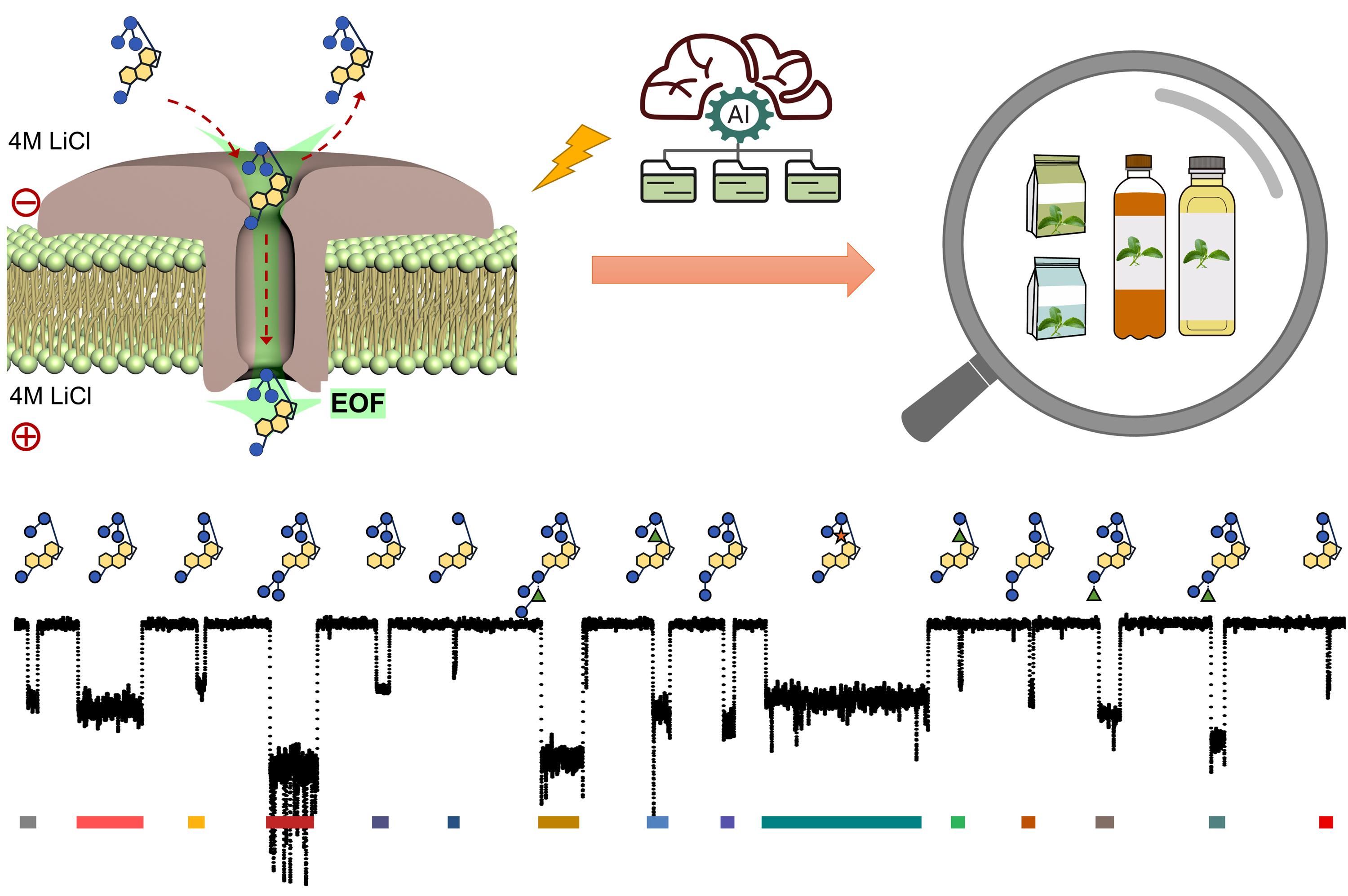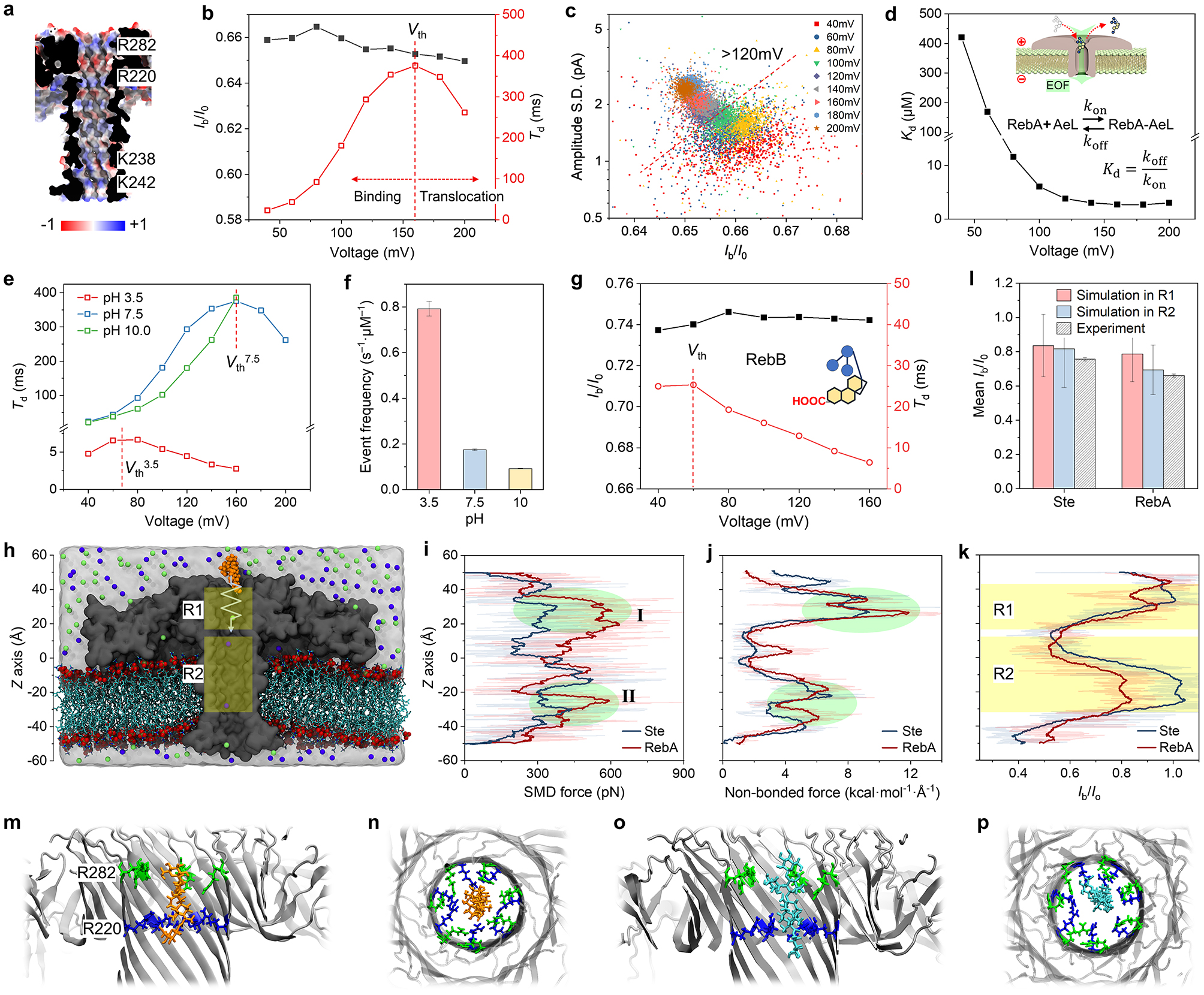Single-Molecule Identification and Quantification of Steviol Glycosides with a Deep Learning-Powered Nanopore Sensor.
Time:2024-08-27 20:37 Author:Minmin Li
Minmin Li, Jing Wang, Chen Zhang, Xinjia Zhao, Yuting Xiong, Yuchen Cao, Dongdong Wang, Xiaonong Li, Xinmiao Liang, and Guangyan Qing*
ACS Nano, 2024, 10.1021/acsnano.4c07038.
https://doi.org/10.1021/acsnano.4c07038
Steviol glycosides (SGs) are a class of high-potency noncalorie natural sweeteners made up of a common diterpenoid core and varying glycans. Thus, the diversity of glycans in composition, linkage, and isomerism results in the tremendous structural complexity of the SG family, which poses challenges for the precise identification and leads to the fact that SGs are frequently used in mixtures and their variances in biological activity remain largely unexplored. Here we show that a wild-type aerolysin nanopore can detect and discriminate diverse SG species through the modulable electro-osmotic flow effect at varied applied voltages. At low voltages, the neutral SG molecule was drawn and stuck in the pore entrance due to an energy barrier around R220 sites. The ensuing binding events enable the identification of the majority of SG species. Increasing the voltage can break the barrier and cause translocation events, allowing for the unambiguous identification of several pairs of SGs differing by only one hydroxyl group through recognition accumulation from multiple sensing regions and sites. Based on nanopore data of 15 SGs, a deep learning-based artificial intelligence (AI) model was created to process the individual blockage events, achieving the rapid, automated, and precise single-molecule identification and quantification of SGs in real samples. This work highlights the value of nanopore sensing for precise structural analysis of complex glycans-containing glycosides, as well as the potential for sensitive and rapid quality assurance analysis of glycoside products with the use of AI.

